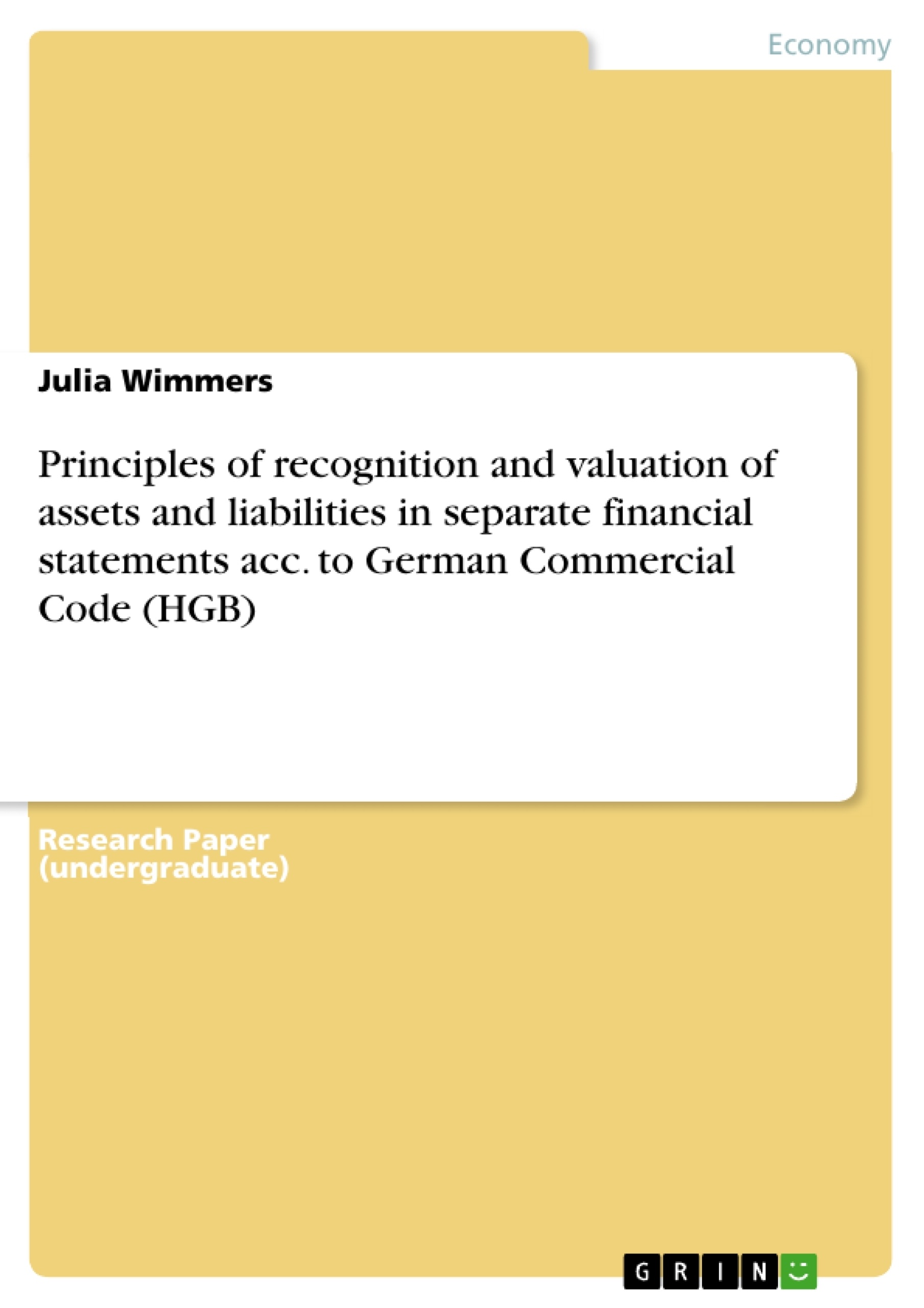Every single company is obliged to make a financial statement according to national law, which is the German Commercial Code (HGB) in Germany. This assignment elaborates important clauses for the domain of “recognition and accounting principles”, lodged in the HGB and then critically monitors and analyzes rules, obligations and bans, deduced from these clauses. The author therefore looks into the subject of accounting challenges in general like the actual
definition of an asset and the right classification of individual assets: which is already detected as the first “room for accounting flexibility” allowing firms to build up hidden reserves, something being highly criticized from supporters of the Anglo-Saxon approach. Next the major valuation principles and in particular the
Prudence Principle with its four occurrences are analyzed, followed by a practical and value oriented overview of the “past, present and future value” approach.
Additionally, the author presents a scheme with the logical “computation of acquisition costs” in order to have a valuation basis for the balance sheet. This
accounting cost termination is however another “option” enabled through the legal text of § 255 HGB to minimize or maximize profits shown to external parties. The core part then focuses on the accounting differences of certain
groups of assets. For theoretical reasons calculation scenarios with
corresponding formulas for the depreciation methods are introduced and executed with a practical example, namely the depreciation for a ten year old machine. This simple example proves that the linear method allows the highest profit shown whereas with the declining method the lowest profit is shown. In the last chapter important aspects and challenges, as the deciding role of the correct
“amount to be paid” for the subject of accounting of liabilities are analyzed.
Table of Contents
- Executive Summary
- List of Abbreviations
- List of Figures and Tables
- Introduction
- Problem Definition
- Objectives
- Methodology
- Accounting and evaluation principles
- Accounting principles
- Accounting bans, obligations and options
- Valuation principles
- Valuation standards according to HGB
- Valuation and accounting according to German Commercial Code
- Accounting of non-current assets
- Accounting of current assets
- Accounting of liabilities
- Conclusion
Objectives and Key Themes
This assignment examines the principles of recognition and valuation of assets and liabilities within the German Commercial Code (HGB), comparing it to Anglo-Saxon accounting standards and highlighting potential for flexibility and manipulation within the HGB framework.
- The German HGB vs. Anglo-Saxon accounting standards: differences in approach.
- Key accounting and valuation principles of the German HGB, including bans, obligations, and options.
- The impact of the Prudence Principle on asset and liability valuation.
- Practical examples of how the HGB allows for flexibility in asset and liability valuation, potentially leading to hidden provisions or reserves.
- Recommendations for addressing potential issues related to accounting transparency and consistency in the HGB framework.
Chapter Summaries
The text begins by introducing the German Commercial Code (HGB) and outlining its key features, highlighting its conservative and prudent nature compared to Anglo-Saxon standards. It then delves into the principles of recognition and valuation, focusing on the GAAP (Generally Accepted Accounting Principles) and their application within the HGB. The text also explores the various accounting obligations, bans, and options that exist for different assets and liabilities, highlighting potential for flexibility in the HGB system.
The chapter on "Valuation and accounting according to GCC" examines the practical application of the HGB principles, providing specific examples and calculations related to depreciation and valuation of assets and liabilities. The text discusses the Prudence Principle and its implications for accounting practices, including the importance of the Lowest Value Principle and its application to different asset types.
The chapter on "Accounting of current assets" explores the specific valuation rules and procedures for current assets, including inventory, accounts receivables, securities, and cash holdings. It examines the various valuation methods allowed under the HGB, highlighting potential for flexibility and manipulation of asset values.
Finally, the chapter on "Accounting of liabilities" focuses on the valuation of liabilities within the HGB, discussing the concept of the "amount to be paid" and the importance of the Realization Principle. The text analyzes the different types of liabilities and accruals, providing a practical overview of the rules and procedures that govern their valuation and accounting.
Keywords
The core concepts and terms of the work are centered around accounting and valuation principles within the German Commercial Code (HGB). This includes key themes such as the Prudence Principle, the Lowest Value Principle, depreciation methods, accounting bans, obligations, and options. It also examines specific asset types, including non-current and current assets, as well as liabilities and accruals. The text compares the HGB to Anglo-Saxon accounting standards, highlighting key differences in approach and potential for flexibility in the German system.
- Quote paper
- Julia Wimmers (Author), 2010, Principles of recognition and valuation of assets and liabilities in separate financial statements acc. to German Commercial Code (HGB) , Munich, GRIN Verlag, https://www.grin.com/document/161639



